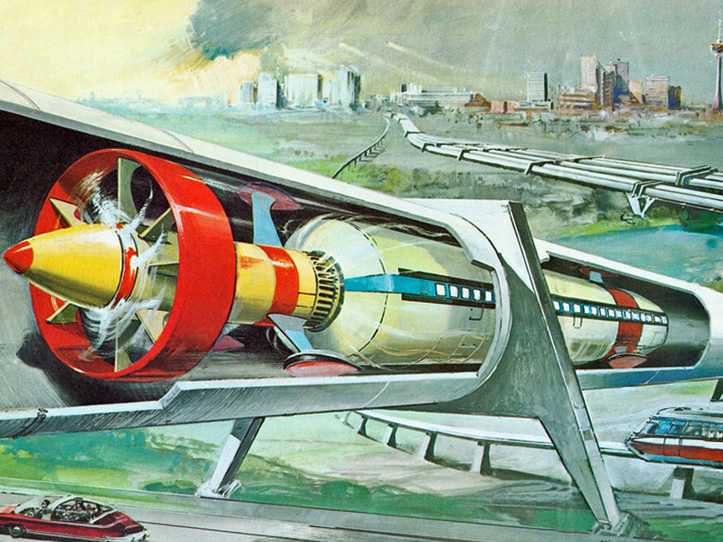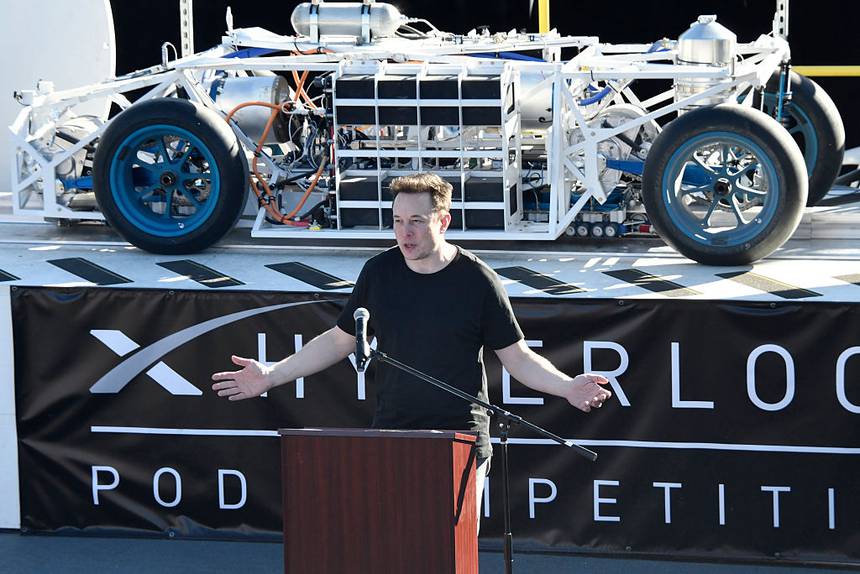I think I will give them advice for free.
I am going to call myself a transportation consultant and respond to Transport Canada’s tender notice. They want the consultant to study the feasibility of Hyperloop technology, to evaluate two critical Hyperloop claims:
- The Hyperloop concept can be transformed into a viable technology that is safe for passengers and the communities where the tubes traverse, and
- The Hyperloop technology cost is comparable or is significantly more affordable than conventional High Speed Rail systems or developing Maglev technologies.
The Hyperloop concept and evolving technology are very new and published information on the engineering details, performance issues, safety requirements, passenger ride quality, and capital and operating costs are limited. As a result, the consultant will provide Transport Canada with a high level overview.
 Xray Delta One on Flickr/via
Xray Delta One on Flickr/viaNow they are not dopes at Transport Canada, and the Minister is an engineer and an astronaut who flew the Space Shuttle three times. But they needn’t spend their loonies on consultants here; I can answer those questions right now because we have been covering pneumatic transportation since Alfred Beach built an air-powered subway in Delirious Pneu York and The Alameda-Weehawken Burrito Tunnel shot tortilla cylinders from San Francisco to New York. There is nothing really new about the idea, other than Elon Musk tweeted about it and invented the meaningless name (is it a loop?) and entrepreneurs figured that this might be a way to squeeze money out of naive investors.
When Musk announced the Hyperloop, he wrote about it as an alternative to the proposed high speed rail for California.
The underlying motive for a statewide mass transit system is a good one. It would be great to have an alternative to flying or driving, but obviously only if it is actually better than flying or driving. The train in question would be both slower, more expensive to operate (if unsubsidized) and less safe by two orders of magnitude than flying, so why would anyone use it?
And now the high speed rail in California is dying, reduced to a stub, in part because the Hyperloop did its job in convincing people that old fashioned tech is out of date and too expensive. As Sam Biddle wrote when it was announced:
By proposing a new way to provide mass transportation that is both cheaper and faster than anything approved by state authorities, Musk is taking aim at the government’s monopoly on large public works projects. He’s saying to policymakers in Washington and Sacramento alike: I can do your job better than you.
Everybody is selling this as something that is faster and cheaper. One Canadian looper tells the CBC:
Transpod’s other co-founder, Ryan Janzen, said hyperloop “has a chance to displace a huge amount of road traffic.” He said his company could build an Ontario to Quebec loop that would run three times faster than high-speed rail, but at a comparable price.
But in response to Transport Canada’s second question, nobody ever explains how an evacuated steel or concrete tube can be as cheap as two steel rails with an electric wire on top, or how the cost of linear induction motors goes up with every foot of distance. The cost of an electric engine for a train is the same no matter how far it goes. Or why the cost of the teeny tunnels that Loopers are playing with now is lower than the usual tunnels built for transportation; make them big enough to accommodate vehicles that are universally accessible or have toilets and emergency exits and you are in a different ballpark. None of this scales.
“We are going to build the greatest downtown relief line. As a matter of fact, when they showed me the plan, my jaw dropped. I thought, ‘Wow, this is thinking outside the box,’ ” @fordnation said.https://t.co/D875nhzOSI
— TorontoStar (@TorontoStar) March 29, 2019
Perhaps Transport Canada, like Ontario’s Premier Doug Ford, has been infected with a case of what I call Hyperloopism, which I defined as “a crazy new and unproven technology which nobody is sure will work, that probably isn’t better or cheaper than the way things are done now, and is often counterproductive and used as an excuse to actually do nothing at all.” But when I first wrote about Hyperloopism infections, so many people had comments like:
Imagine how many airline flights will be replaced by the hyperloop. And how much carbon removed from the atmosphere when it’s powered by distributed wind power from the right of way leases for the hyperloop routes. Imagine the reduction in cost of travel. Lloyd doesn’t mention this in his rant. The curmudgeon gene is expressed strongly.
So Transport Canada probably won’t want to listen to me, or to Paul Langan of High Speed Rail Canada, who tells the CBC:
Transport Canada has misplaced its priorities, spending public money to investigate “science fiction. Why aren’t we going to technology that exists for half a century that is proven and safe? It doesn’t make sense. Keep the Jetsons. Keep hyperloop as the cartoon that it is.”
